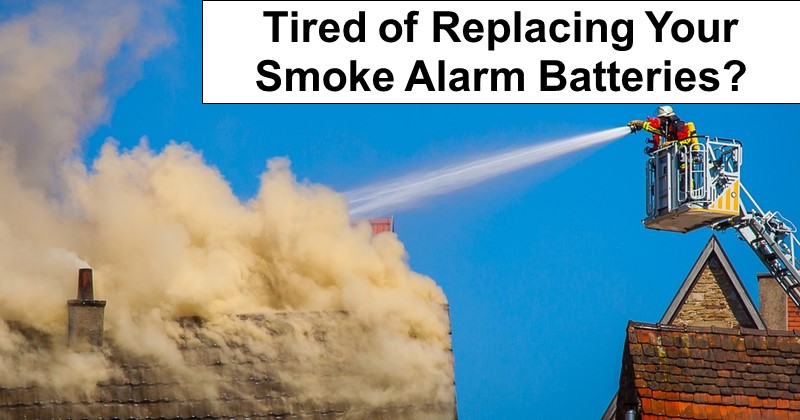
Changing smoke alarm batteries has been a part of my preparedness “ritual” for many years now. And every year, I would purchase more 9-volt batteries because it seems that every alarm I had (except one or two) uses them.
But it got to a point where I realized I was spending a good twenty dollars or more each year simply to replace batteries in all my smoke alarms and carbon monoxide detectors, batteries that were likely still good and, sadly, didn’t seem to have a use in my gear BESIDES in smoke alarms.
Two months ago I’d had enough, so I decided to purchase these First Alert battery-operated 10-year smoke alarms for our bedrooms, kitchen, and basement. Granted, they’re not the least expensive option out there, but these alarms will surely pay for themselves over the full ten years of service BECAUSE I don’t have to replace 9-volts any longer. That makes me very happy. 🙂
Did you know that you’re supposed to replace your smoke alarms (no matter what) every ten years?
This website states: “Like all devices with electronic components, smoke alarms have a limited effective service life. As electronic devices, smoke alarms are subject to random failures. In 10 years there is roughly a 30% probability of failure before replacement. After 15 years, the chances are better than 50/50 that your alarm has failed. That is too big a risk to take. Replacing alarms after 10 years protects against the accumulated chance of failure, but monthly testing is still your first, best means of making sure your alarm will work.”
I also chose to replace the three wired smoke alarms in my house with “lifetime” battery backup options too. I figured I might as well because, even though we rent, there’s no harm in ensuring all smoke alarms in the house are in good, working order. Besides, even if we don’t stay for the entire ten years, at least, the next occupants should be a bit safer because I updated all of the alarms in the house.
I did notice, however, that one of the alarms–the one near the kitchen–has been giving off too many false alarms whereas the previous alarm wasn’t. Perhaps that was an indication the previous alarm was failing? After all, most of the smoke alarms in the house were nearing their ten year lifespan.
Anyway, I went looking online to see if I was installing my smoke alarms in the wrong place and I happened upon this good reference regarding proper smoke alarm placement, a portion of which is reproduced here for your convenience:
- Install smoke alarms inside each bedroom, outside each sleeping area and on every level of the home, including the basement.
- On levels without bedrooms, install alarms in the living room (or den or family room) or near the stairway to the upper level, or in both locations.
- Smoke alarms installed in the basement should be installed on the ceiling at the bottom of the stairs leading to the next level.
- Smoke alarms should be installed at least 10 feet (3 meters) from a cooking appliance to minimize false alarms when cooking.
- Mount smoke alarms high on walls or ceilings (remember, smoke rises).
- Wall-mounted alarms should be installed not more than 12 inches away from the ceiling (to the top of the alarm).
- If you have ceilings that are pitched, install the alarm within 3 feet of the peak but not within the apex of the peak (four inches down from the peak).
- Don’t install smoke alarms near windows, doors, or ducts where drafts might interfere with their operation.
- Never paint smoke alarms. Paint, stickers, or other decorations could keep the alarms from working.
I hope that helps you get your smoke alarms and fire safety in better order, especially since we’re coming up on the holiday season.
Leave a Reply